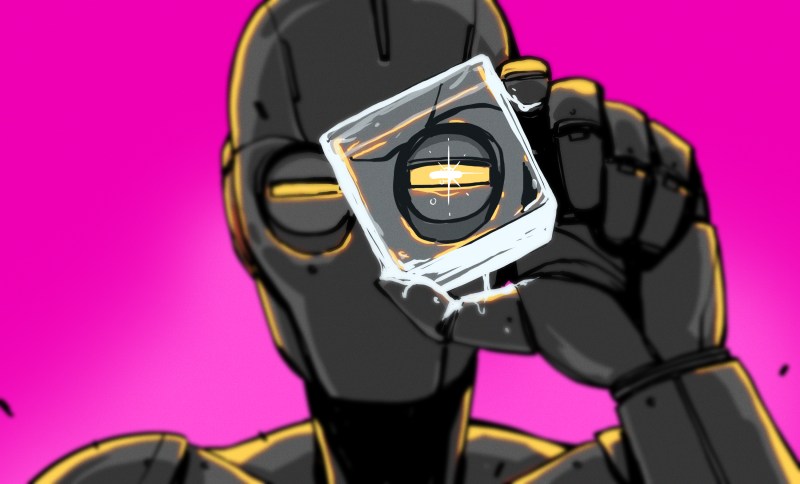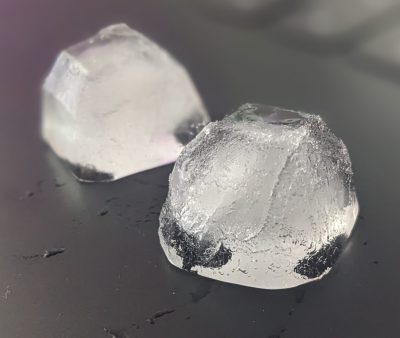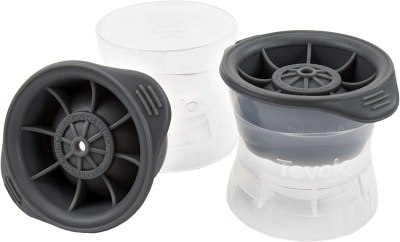
For most of us, ice isn’t something we’ve thought about in detail since our high school science classes. For most of us, we pour some tap water into the ice trays, slam it in the freezer, and forget about it. Then we lob the frozen misshapen cubes into a beer and enjoy a quite literally ice-cold beverage.
However, there’s so much more fun to be had with ice if you really get into it. If you’ve ever wondered how pretentious cocktail bars make their fancy ice spheres or transparent cubes, read on!
Heading In The Right Direction

Clear ice is the hallmark of any swanky institution; it’s far more luxurious and visually-appealing than the cloudy stuff that comes out of our domestic freezers. As it turns out, though, it only requires a basic understanding of the freezing process to make your own clear ice at home. If you know why the ice comes out frosty, cloudy, and ugly, you can counteract that to get prettier results.
Ice cubes tend to look all cloudy because of the way they freeze. The water we use to make ice has impurities and air bubbles in it. When placed into an ice cube tray, the water starts freezing from the top, bottom, and sides all at once. As it begins to freeze, the trapped air and impurities get pushed away from the frozen section and towards the center of the cube. This creates an ice cube that’s somewhat clear on the outside with a particularly cloudy center. You might have noticed that sometimes when your ice cubes start to melt, they’re clear on the outer sections and most opaque in the middle.
You may have heard of tricks to make clear ice by pulling all the air out or using distilled water, but it’s actually entirely unnecessary to use such pure water. Instead, the trick to clear ice is to pursue a technique called “directional freezing.” By getting the ice to freeze in one singular direction, the impurities in the water are all pushed to one end of the resulting cube. This creates a mostly-clear ice cube with a small section at the end that’s opaque due to trapped air and impurities. In fact, if the cube is removed from the freezer before it’s completely frozen, you can get a completely clear cube with some water left in the bottom.
Perhaps the easiest way to try this is to put a drink cooler in a large freezer, fill it with water, and leave the top open. The open top and insulated means that the water will freeze from the top down, in one direction. This tends to create a clear slab of ice with only the last quarter or so being cloudy and opaque.
Ice trays are available that use the same technique. It’s as simple as insulating the tray from the sides and bottom, ensuring that the cold air from the freezer gets the top of the tray coldest. The ice then forms from the top down, with only the bottom of the cubes showing the usual cloudiness. The trays sometimes feature an overflow reservoir at the bottom that allows the impurities to leave out the bottom of the tray to create more perfectly clear cubes. Combining these techniques with cleaner water with less air content can net even better results, but typically, just getting the directional freezing happening is enough.
Get Around It

Maybe clear ice isn’t enough for you, and you want to up your game. Ice spheres are a common way to add some pop to a mixed drink, and are fun to marvel at and jiggle around in a glass.
There are a few ways to make ice spheres, particularly clear ones. A simple technique involves using a spherical mold placed on top of a thermos. Both the thermos and mold are filled with water. The mold has a small hole in the bottom, and is placed on top of the insulated container. Much like with the cubes, the water in the uninsulated mold freezes first, with the impurities pushed out the bottom hole into the water in the thermos, which remains liquid for longer.
However, mold-based methods incur a significant aesthetic penalty in the form of a seam line. It’s possible to rub these off with some body heat, but true efficiency-heads abhor fussy post-processing steps and irregular spheres. If you want a truly perfect ice sphere, you need to get yourself an ice ball mold. These consist of two metal halves with a machined spherical cavity inside. The two halves are heated slightly, and a large hunk of ice is placed in between. The heat of the metal gradually melts away the unwanted parts of the ice as the top half slowly works its way down under gravity. The top half moves down along machined metal rods to ensure it stays true. As the two halves come together, you’re left with a perfect ice sphere inside. If you used clear ice, it’s transparent, too.

Spherical molds do have benefits of their own, too. They can make it easy to add flashy garnishes like cherries or flowers inside your ice spheres. In a particularly impressive feat, we’ve even seen a spiral-cut lime skin delicately frozen into a clear ice ball. If you’re looking for a way to justify charging $50 for a cocktail, this is it.
Kitchen Fun
Ice may seem like a humble, mundane thing. However, with a few simple tools and an understanding of the science, it’s possible to create some really beautiful effects for cocktails, desserts, or just learning about the world. Some fields of research are inaccessible for the home gamer, but playing with ice is a great way to indulge a passion for science in even the most jaded water enthusiast.
0 Commentaires